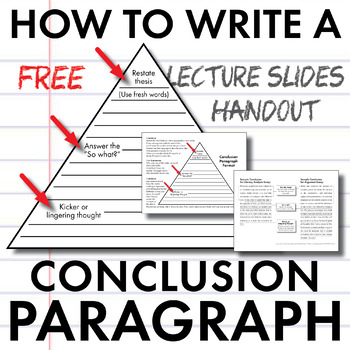
How to Write a Good Conclusion for an Essay
In this article I will discuss how to write a good conclusion sentence. When writing a conclusion, it is important to avoid the tired “in conclusion” and instead ask a question for the reader to consider. When possible, connect your idea to current society. Also, avoid cliche conclusion sentence starters. You can also consider writing in a compound or parallel structure. After all, your readers want to know how you feel!
Avoid repeating what you’ve already said in your introduction
A good conclusion restates the thesis and summarizes your arguments. To create a strong sense of conclusion, you can refer to the original scenario, imagery, or theme from the introduction. The goal of the conclusion is to leave the reader with insight, a call to action, or a question to further study. Here are some tips for writing an effective conclusion. Here are some ways to avoid common mistakes:
Start your paper with an introduction. Your introduction should be a map of the paper and should inform the reader of the parts to come. This should also make it clear which parts to skip and which ones to agree with. Don’t create a cliffhanger or mystery by repeating the same ideas from the beginning of the paper. Instead, give the reader the information they need to know to continue reading the paper.
Avoid cliche conclusion sentence starters
Despite how many times you’ve heard the term “conclusion,” you might be wondering what it means. A conclusion is an important part of your writing and should draw the reader’s attention to the end of your work. However, a strong conclusion is not just about summarizing what you’ve written. It should also be creative and original – don’t resort to decorative language or overused cliches. Your conclusion should summarize the entire work, not focus on a single point.
A good conclusion is the last paragraph of your work. This is where you can summarize your essay, include a call to action or a warning, and leave your audience with a lasting impression. It’s important to use a good conclusion sentence starter, as it can make or break your work. Listed below are some good conclusion sentence starters to use in your essay. These will give your readers a sense of closure.
Avoid remorseful phrase
Avoid a remorseful phrase when writing the conclusion of your essay. While your reader will appreciate the conclusion of your essay, you need to avoid putting it down in the end. The goal of the conclusion is to give the reader food for thought, so you should avoid using such words. Instead, try to convince your reader that your idea is the right one. That way, your reader will continue to read your essay.
If you don’t want to use a remorseful phrase in your essay, you can substitute it with a different word. One such word is “to conclude,” which means “to summarize.” While this phrase is acceptable, it will not get you any points. To use it properly, it is not uncommon to end your essay with an overly lengthy remorseful phrase.
Compound or parallel in structure
If you have any difficulty composing a proper sentence, you can check if it is parallel or compound by using the link below. Parallel sentences sound better because they are more aesthetically pleasing and avoid unnecessary repetition. A parallel structure reduces the amount of work required of the reader and helps him or her focus on the main point. You can check whether a sentence is parallel by pairing two elements, such as nouns and verbs, or prepositional phrases and prepositional clauses. You can also check for parallelism by underlining each element in the sentence.
A good example of a parallel structure is a list of three items. The first item in the list is the first one, and the next items should be the same. A parallel structure is important even if there is no colon in the list. A good example of a parallel structure is a list of three items that are related to each other. For example, if a group of employees works at the same company, each member of the committee must vote on reducing the number of employees, cutting benefits, and reducing wages.

